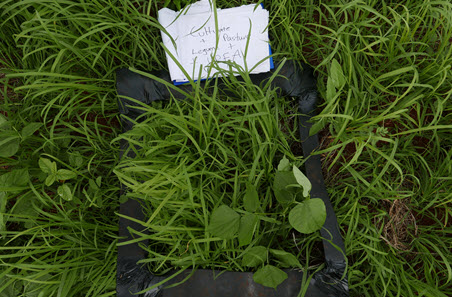Overview: control methods

Six large-scale field trials have been established on dieback-affected commercial grazing properties in southern and central Queensland at Yerra, Biggenden, the Biloela region and Middlemount.
Below is an overview of the pasture dieback control methods that were trialled between January and March 2018. For an analysis of the results, click here.
Fertiliser application
Broadcasting fertiliser (75 or 150kg/ha DAP or MAP) increased pasture growth significantly, especially when applied in addition to re-sowing and/or cultivation. Coated urea has not been effective in trials to date.
Burning
Burning of buffel promotes new pasture growth and higher biomass with added fertiliser. However, dieback symptoms reappear and so burning cannot be considered an effective control measure at this stage.
Slashing
Slashing/heavy grazing followed by fertiliser application has resulted in a large biomass improvement in field trials at Wowan. However, dieback symptoms reappeared after the pasture re-established.
Weather conditions in recent years
Winters have been mild without severe frosts. Summers have been long and dry, with large isolated rainfall events (cyclones and flooding rains). There appears to be an association with dieback spreading and heavy rainfall events and flooding.
Mealy bugs
Spraying mealy bug-affected pasture (bluegrass and Rhodes grass) with insecticide improves pasture growth. MLA is applying for an emergency use permit for the control of mealy bug in pasture. Insecticides cannot be used for the control of mealy bug until a permit is granted by the APVMA. Broad spectrum insecticide will also kill beneficial insects.
For more information on these trials and/or control methods, please contact:
Dr Gordon Rogers
Applied Horticultural Research
Email Dr Gordon Rogers
M: 0418 517 777



